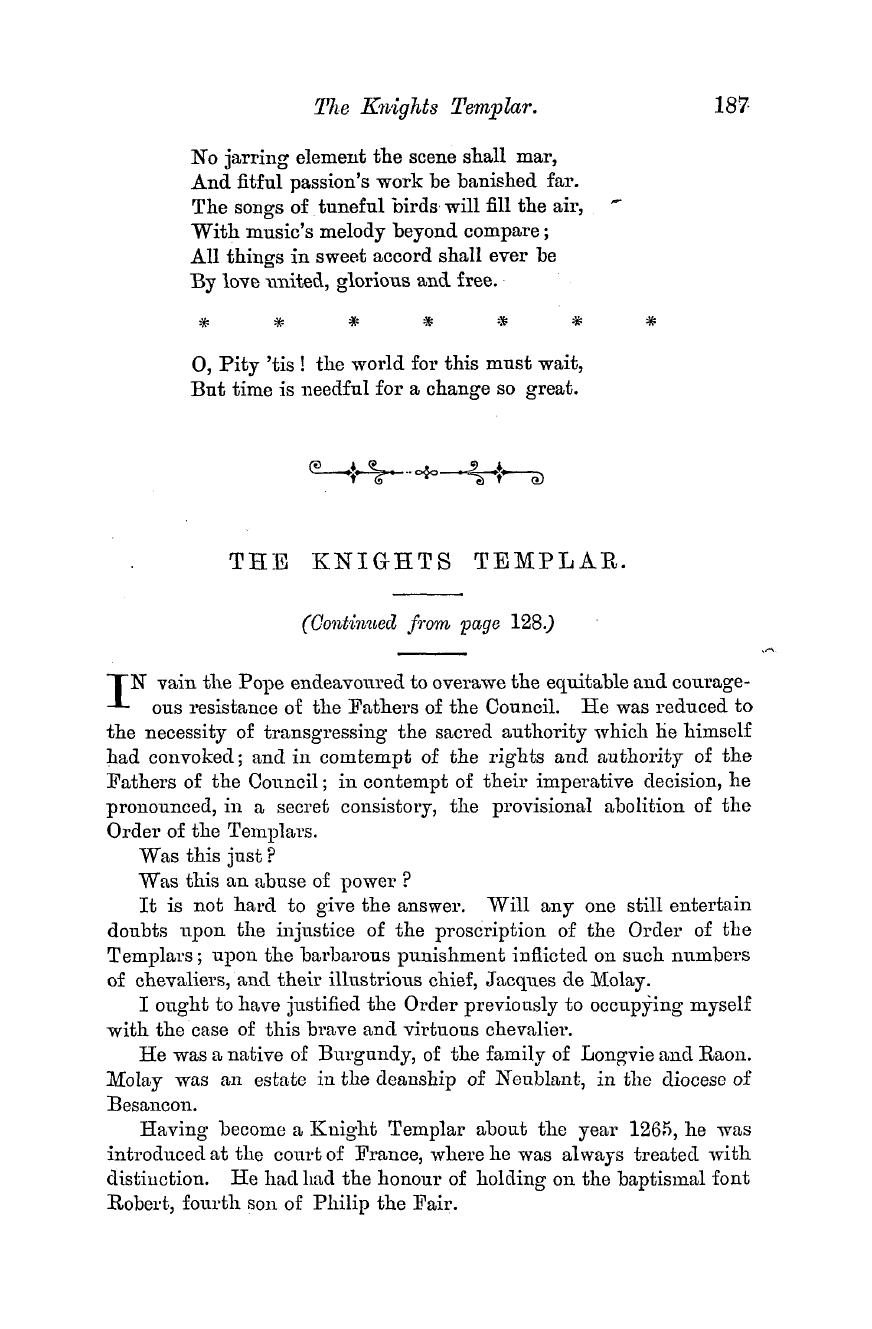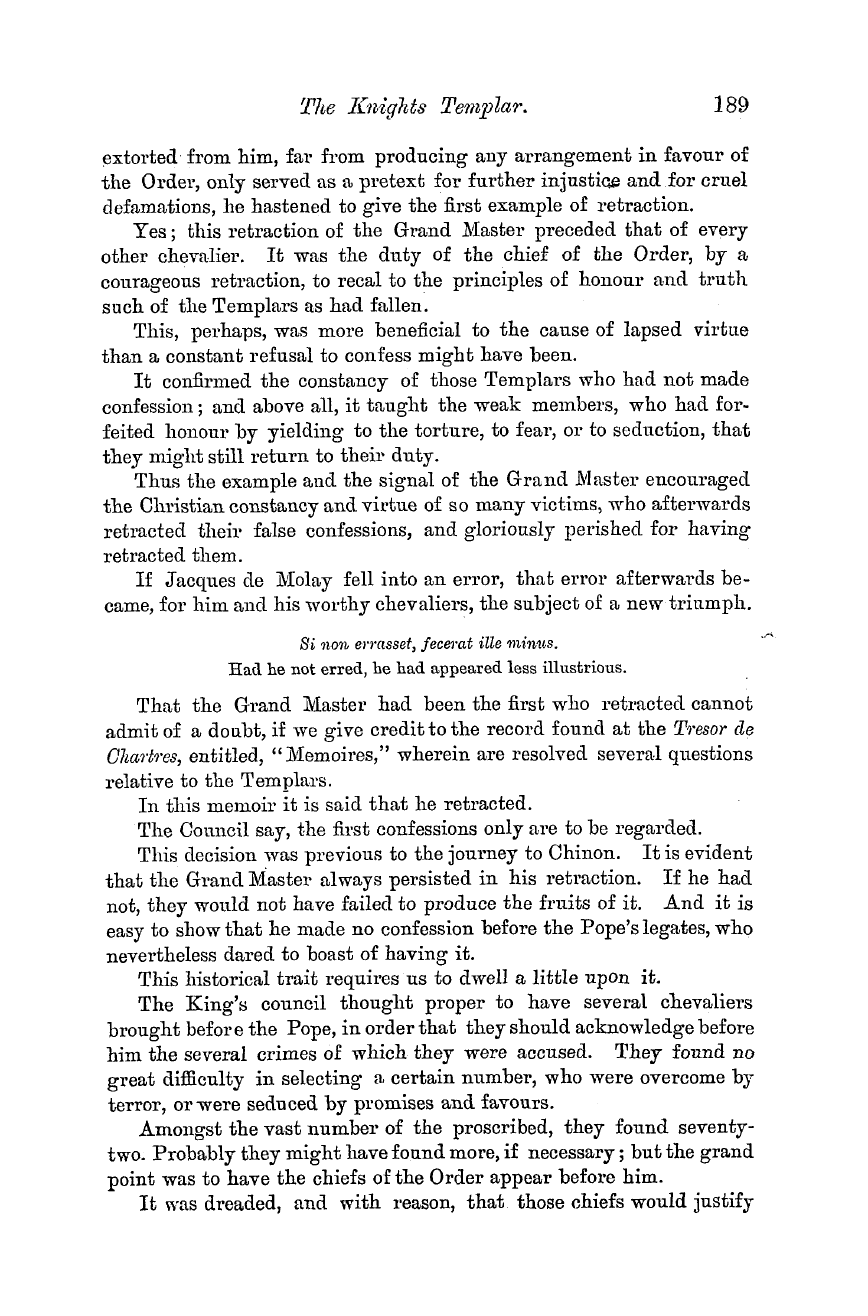-
Articles/Ads
Article THE ROMAN COLLEGIA. ← Page 2 of 6 →
Note: This text has been automatically extracted via Optical Character Recognition (OCR) software.
The Roman Collegia.
the Quindecimvirorum . Numa Pompilius is said by many writers , and especially Plutarch , to have instituted the Collegia Artificum et Opificum , and to have introduced Greek artists to compose these Fraternities . It is also asserted that he divided the whole Artificer classes into "Colleia et decurias , " decuria being a word subsequently frequently
applied to a sodalicium , or an hetseria , a company , a society . Over these Collegia he placed a Prgefect , " Prsefectus Collegii , " or " Prsepositus Collegii , " and thus these organizations spread into the cities and colonies of Rome , and accompanied even her conquering legions . They are , therefore , the subject of distinct laws and imperial decisions . These
Collegia seem from the inscriptions not to have been confined , however , merely to artificers , whatever their original institution , but to have included all sorts and conditions of Roman citizens and dependent colonists , and those who obtained Roman citizenship . Thus we find references to and mention of the Collegium Capitolinorum , and
the Collegium Fabrum . * There were also , as many inscriptions prove , the CollegiaFabruHi Ferrariorum , Tignariorum , Aurificum , iErariorum , Dendrophororum , Centonariorum , the Collegia Saganorum , Teenariorum , Poetarum , iNautarum , Corneliorum ( freed slaves ) , Figulorum ,
Kalendariorum , Fabrum Navalium , Bquitum , and many more . We also read of the Collegium Virtutis , Vivorum Sociorum , Tibicinum et Fidicinum , the Magnum Collegium , the Fratres Arvales ( a very important Collegium ) , and that of the Corporati , and a large number besides . These Collegia were governed , as I said before , by a
Prtefectus , who is also termed Prsefectus Quinquennalis , Prasfectus et Patronus , Prsefectus Morporatus , Prsefectus et Quinquennalis Perpetuus . They also had Patroni and Patroni Quinquennales Perpetui , Magistri , Pro Magistri , a Proto Magister , Decuriones , Qusestores , even Tribuni . They jDossessed members who were styled allecti ,
adlecti et honorati , viatores , arkarii ( Greek for arcarii , from area or arka , a chest ) , custodes , apparitores , curatores , quindecimviri , septemviri , sexviri , triumviri , duumviri , soci , and sodales . In Greek inscriptions we meet with the words ieropoioi and sunodos ton muston . We light upon mention also of a " Magister et Flamen , " of a Publicus ,
of a Tutor , of a Templum Collegii , of a Sacerdos , and of an Augur , of a Decut'io Quinquennales , and of a Dux Collegii . Some of the inscriptions make record of a Patronalis Collegii and a Legatus . The Magistri Quinquennales Coll . Fabr . are met with very often , as well as a Patronus and Patroni , and a Prsefectus et Patromis , as I said
Note: This text has been automatically extracted via Optical Character Recognition (OCR) software.
The Roman Collegia.
the Quindecimvirorum . Numa Pompilius is said by many writers , and especially Plutarch , to have instituted the Collegia Artificum et Opificum , and to have introduced Greek artists to compose these Fraternities . It is also asserted that he divided the whole Artificer classes into "Colleia et decurias , " decuria being a word subsequently frequently
applied to a sodalicium , or an hetseria , a company , a society . Over these Collegia he placed a Prgefect , " Prsefectus Collegii , " or " Prsepositus Collegii , " and thus these organizations spread into the cities and colonies of Rome , and accompanied even her conquering legions . They are , therefore , the subject of distinct laws and imperial decisions . These
Collegia seem from the inscriptions not to have been confined , however , merely to artificers , whatever their original institution , but to have included all sorts and conditions of Roman citizens and dependent colonists , and those who obtained Roman citizenship . Thus we find references to and mention of the Collegium Capitolinorum , and
the Collegium Fabrum . * There were also , as many inscriptions prove , the CollegiaFabruHi Ferrariorum , Tignariorum , Aurificum , iErariorum , Dendrophororum , Centonariorum , the Collegia Saganorum , Teenariorum , Poetarum , iNautarum , Corneliorum ( freed slaves ) , Figulorum ,
Kalendariorum , Fabrum Navalium , Bquitum , and many more . We also read of the Collegium Virtutis , Vivorum Sociorum , Tibicinum et Fidicinum , the Magnum Collegium , the Fratres Arvales ( a very important Collegium ) , and that of the Corporati , and a large number besides . These Collegia were governed , as I said before , by a
Prtefectus , who is also termed Prsefectus Quinquennalis , Prasfectus et Patronus , Prsefectus Morporatus , Prsefectus et Quinquennalis Perpetuus . They also had Patroni and Patroni Quinquennales Perpetui , Magistri , Pro Magistri , a Proto Magister , Decuriones , Qusestores , even Tribuni . They jDossessed members who were styled allecti ,
adlecti et honorati , viatores , arkarii ( Greek for arcarii , from area or arka , a chest ) , custodes , apparitores , curatores , quindecimviri , septemviri , sexviri , triumviri , duumviri , soci , and sodales . In Greek inscriptions we meet with the words ieropoioi and sunodos ton muston . We light upon mention also of a " Magister et Flamen , " of a Publicus ,
of a Tutor , of a Templum Collegii , of a Sacerdos , and of an Augur , of a Decut'io Quinquennales , and of a Dux Collegii . Some of the inscriptions make record of a Patronalis Collegii and a Legatus . The Magistri Quinquennales Coll . Fabr . are met with very often , as well as a Patronus and Patroni , and a Prsefectus et Patromis , as I said































































